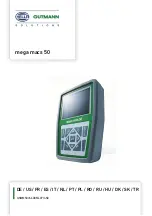
11 – Synchronization–Tempo map
98
TASCAM 788 Digital PortaStudio
4
Cue the sequencer to the start of the song (it is
not possible to record from part of the way
through).
5
Press
ENTER/YES
on the 788. The sync track is
now “armed” and the display shows
Wait
for Start
.
6
Start playing back the sequence. If the connec-
tions have been made properly, the 788 display
shows
Recording...
To interrupt the recording of the sync track
before the end, press
NO
.
7
At the end of the sequence, or if the sequence is
stopped, the 788 display shows
Complete
.
Press
EXIT/NO
to save the sync track. If you
press
ENTER/YES
at this point, you will re-arm
the sync track and you will have to record it
again.
NOTE
The 788 and the sequencer should be independently con-
trolled here (that is, neither should be a control slave of the
other). See “MMC and MIDI functions” on page 101.
The start of the sync track is always the ABS 00:00:00:00
point, that is, the first beat of the first bar falls at the zero
point. It is not possible to offset the sync track.
Using the sync track
To use the recorded sync track to control the external
sequencer from the 788:
1
Make sure that the synchronization source for
the 788 is set to
INT
(internal)—see “Syn-
chronization master/slave setting on the 788”
on page 96. The
MIDI OUT
of the 788 should be
connected to the MIDI IN of the sequencer.
2
Set the
SYNC GEN
parameter on the 788’s
SYNC
screen to
SycTRK
(see “Selecting
the master synchronization type” on page 96).
3
Set the sequencer to respond to an external
clock source and make it ready to accept an
external MIDI Start command.
4
Return to the home screen on the 788, and
press
PLAY
. The sequencer starts playing back
at the time position corresponding to the ABS
time on the 788.
NOTE
You do not have to start playback at the beginning of the
song. If you locate to a time position on the 788, the
sequencer will pick up the correct time from the MIDI SPP
data output by the 788.
Although it is possible to change to the bars and beats dis-
play on the 788, the values displayed when using the sync
track do not correspond to the bars and beats on the
sequencer, unless a tempo map is entered on the 788
where the signature changes correspond to those in the
sequence (note that even if the bar/beat position matches
the sequencer, the tempo probably will not). You should
therefore usually use the ABS time values when locating,
as these are generally more meaningful location values.
Tempo map
You can enter the tempo map to allow the 788 to send
tempo (clock) and SPP information to a MIDI
device, when it is not possible to record a sync track.
Another advantage of using the tempo map is that it
allows you to locate to bars and beat positions on the
788, as described in “Direct location (ii)” on page 61
(using the sync track does not automatically map the
bars and beats), and this is therefore a more “musi-
cal” way of controlling the synchronization of the
788 with a sequencer.
Entering and editing the tempo map
You must enter the tempo map manually, using the
procedure described here:
1
Make sure playback and recording are
stopped, and press the
MENU
key.
2
Use the dial to scroll down to
SYNC/
MIDI
, and press
ENTER
.
3
Use the dial to highlight
TEMPO MAP
, and
press
ENTER
.
















































